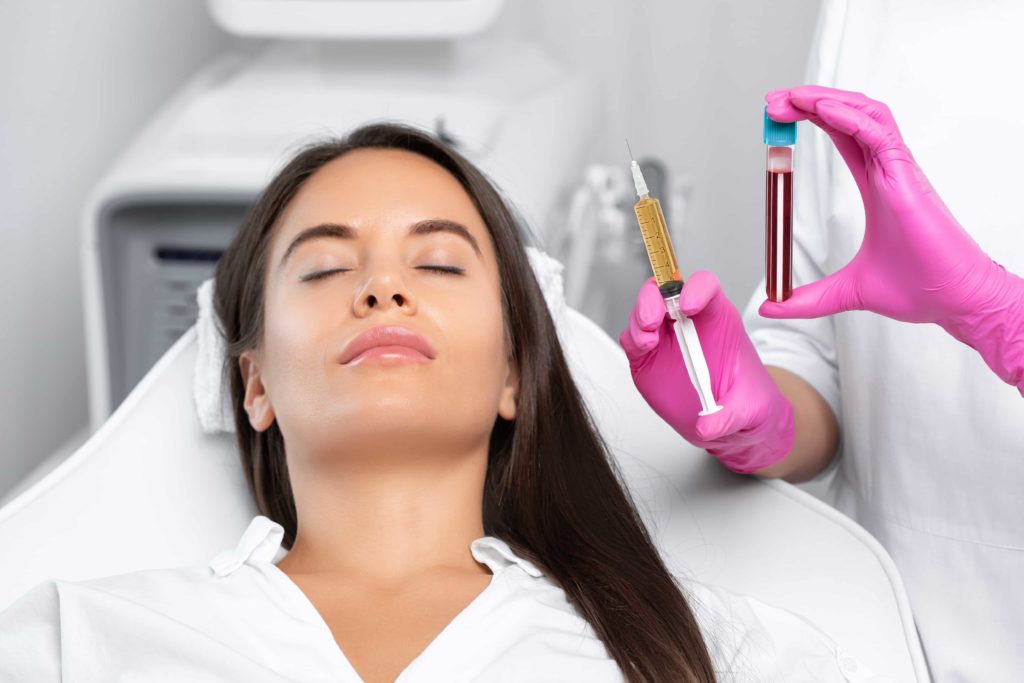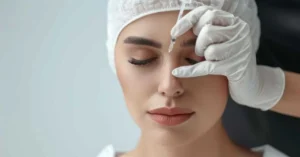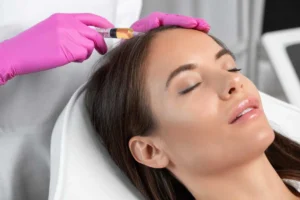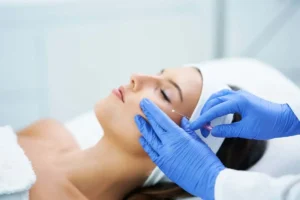
In recent years, medical science has made remarkable strides in regenerative therapies, and one such breakthrough is Platelet Rich Plasma (PRP) therapy. This cutting-edge treatment utilizes the body’s healing components to stimulate tissue regeneration and accelerate natural healing. PRP has gained significant attention across various medical fields, from orthopedics and dermatology to sports medicine and dentistry. In this blog, we will probe the concept of Platelet Rich Plasma therapy, its benefits, and its applications in different fields of medicine.
Understanding Platelet Rich Plasma (PRP)
Platelet-rich plasma (PRP) is a concentrated plasma derived from the patient’s blood. This plasma contains a high concentration of platelets, growth factors, and other bioactive proteins. Preparing PRP involves extracting a small amount of blood, centrifuging it to separate the plasma from other blood components, and then concentrating the platelets to obtain a highly concentrated PRP solution.
How PRP Therapy Works
PRP therapy works on the principle of utilizing the body’s natural healing mechanisms. Platelets are primarily known for their role in blood clotting, but they also play a crucial role in tissue repair and regeneration. When injected into an injured area, PRP releases many growth factors that stimulate cell proliferation, collagen production, and tissue regeneration. This process promotes accelerated healing, reduced inflammation, and improved overall tissue function.
Applications of PRP Therapy
a) Orthopedics and Sports Medicine: PRP therapy has revolutionized the treatment of musculoskeletal injuries and conditions. It is widely used to alleviate pain and promote healing in tendonitis, ligament sprains, muscle strains, and osteoarthritis cases. PRP injections help stimulate tissue repair and reduce inflammation, enhancing recovery and improving functional outcomes.
b) Dermatology and Aesthetics: In the field of dermatology, PRP therapy has gained popularity for its regenerative and rejuvenating effects on the skin. It is commonly used to treat acne scars, wrinkles, and hair loss. The growth factors in PRP stimulate collagen production, improve skin texture, and promote hair follicle regeneration, resulting in a more youthful appearance.
c) Dentistry and Oral Surgery: PRP therapy has applications in dentistry and oral surgery to enhance post-operative healing and promote tissue regeneration. It is used in dental implants, bone grafting, and periodontal surgeries. The growth factors in PRP accelerate bone and tissue healing, leading to improved outcomes and reduced recovery time.
d) Chronic Wound Healing: Chronic wounds, such as diabetic ulcers and venous leg ulcers, pose significant challenges in terms of healing. PRP therapy offers a promising solution by providing a concentrated source of growth factors to stimulate wound healing and tissue regeneration. The application of PRP promotes angiogenesis, collagen synthesis, and epithelialization, leading to faster wound closure and improved healing outcomes.
Advantages and Effectiveness of PRP Therapy
a) Safety and Natural Healing: PRP therapy utilizes the patient’s blood, reducing the risk of allergic reactions or transmission of diseases. Since it leverages the body’s natural healing mechanisms, it offers a safe and effective alternative to more invasive procedures or medications.
b) Non-Surgical Approach: PRP therapy is a non-surgical and minimally invasive treatment option, making it a favorable choice for patients seeking alternative treatments. It avoids the risks and complications associated with surgery while improving healing and functional outcomes.
c) Personalized Treatment: PRP therapy can be tailored to meet individual patient needs. The concentration of platelets and growth factors can be adjusted based on the specific condition being treated, allowing for a personalized and targeted approach to healing.
d) Enhanced Healing and Recovery: Studies have shown that PRP therapy can significantly accelerate the healing process, reduce pain, and improve functional outcomes. It promotes tissue regeneration, reduces inflammation, and enhances the body’s natural healing response, leading to faster recovery and improved quality of life.
The Role of PRP in Sports Injuries and Performance Enhancement
a) Sports Injuries and PRP: Athletes often face injuries that can hinder their performance and lead to prolonged recovery. PRP therapy has gained significant attention in sports medicine due to its potential to expedite healing and promote tissue regeneration. It has been used to treat tendonitis, muscle strains, ligament injuries, and fractures. By accelerating the healing process, PRP allows athletes to return to their sport faster and with improved functional outcomes.
b) Performance Enhancement: In addition to injury treatment, PRP therapy is also utilized for performance enhancement in sports. PRP can stimulate tissue repair and regeneration when injected into areas with mild or moderate degenerative changes. This can be particularly beneficial for athletes looking to optimize their performance, improve joint function, and enhance overall athletic ability. PRP therapy has gained popularity among professional athletes seeking non-surgical options for improved performance and reduced downtime.
PRP and Chronic Pain Management
a) Chronic Pain Conditions: Chronic pain conditions, such as osteoarthritis and chronic tendinopathy, can significantly impact an individual’s quality of life. Traditional treatment approaches often focus on pain management rather than addressing the underlying cause. PRP therapy offers a regenerative approach to chronic pain management by targeting the root cause of the pain and promoting tissue healing. The growth factors released by PRP injections can reduce inflammation, improve joint function, and alleviate pain, providing long-lasting relief for individuals suffering from chronic pain conditions.
b) Combination Therapies: PRP therapy is often used with other treatments for enhanced pain management. Sometimes, PRP injections may be combined with physical therapy, rehabilitation exercises, or other regenerative therapies such as stem cell therapy. These combination therapies can provide synergistic effects, maximizing the benefits of each treatment modality and offering complete pain relief and functional improvement.
Ongoing Research and Future Directions in PRP Therapy
a) Advancements in PRP Technology: Ongoing research aims to refine PRP therapy by optimizing the preparation techniques, concentration levels, and delivery methods. New technologies, such as platelet-rich fibrin (PRF) and leukocyte-rich PRP (LR-PRP), are being explored to enhance the therapeutic potential of PRP. These advancements promise even better treatment outcomes and expanded applications in the future.
b) Novel Applications of PRP: The versatility of PRP therapy has led to ongoing investigations into its potential use in various medical fields. Researchers are exploring its applications in neurology, cardiology, urology, and veterinary medicine. Preliminary studies show promising results, indicating that PRP therapy may have broader implications beyond its current applications.
c) Clinical Trials and Evidence-Based Medicine: To further establish the efficacy and safety of PRP therapy, ongoing clinical trials are being conducted to gather robust scientific evidence. These studies aim to validate the benefits of PRP in specific conditions, compare it to standard treatments, and identify the most effective protocols. This research will contribute to the growing body of evidence supporting the use of PRP therapy and guide its integration into mainstream medical practice.
Conclusion
Platelet Rich Plasma (PRP) therapy has emerged as a game-changing regenerative treatment, offering various benefits across various medical fields. Its ability to harness the body’s natural healing mechanisms and promote tissue repair has made it a sought-after solution for enhanced healing, pain management, and performance enhancement. From orthopedics and dermatology to dentistry and chronic wound healing, PRP therapy has demonstrated remarkable effectiveness, providing patients with non-surgical options and personalized treatment approaches.
As you explore the realm of PRP therapy, it’s essential to seek reputable medical aesthetics clinics specializing in this innovative treatment. One such establishment that excels in providing PRP therapy and a range of other cutting-edge aesthetic procedures is The Skin Refinery Medical Aesthetics. With their expertise, state-of-the-art facilities, and commitment to personalized care, The Skin Refinery offers a comprehensive approach to skin rejuvenation and overall well-being. From acne scar treatment and wrinkle reduction to hair restoration and skin tightening, their highly skilled professionals will tailor a treatment plan to meet your unique needs. Experience the transformative power of PRP therapy and other advanced aesthetic procedures at The Skin Refinery Medical Aesthetics today.





